ART HISTORY MIDTERM II
1/110
There's no tags or description
Looks like no tags are added yet.
Name | Mastery | Learn | Test | Matching | Spaced |
|---|
No study sessions yet.
111 Terms
(mid 7th century - 480 BCE) period
development of the city-state, the Greek alphabet, and major literary and artistic achievements
Archaic
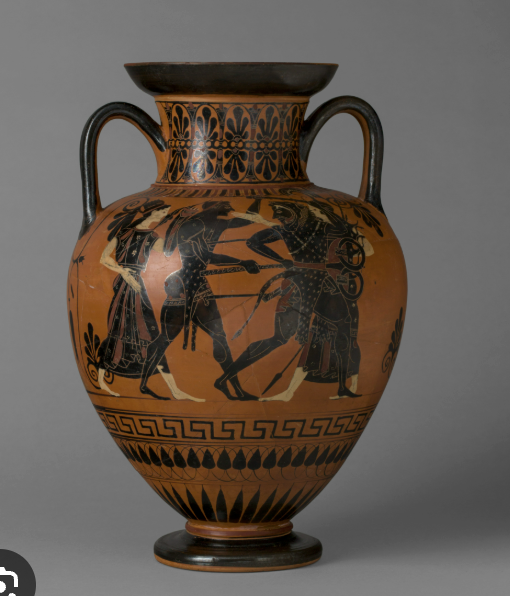
a large, narrow necked two-handled storage jar, primarily used in ancient Greece and Rome to transport and store liquids like wine and oil, as well as other goods like grain
amphora
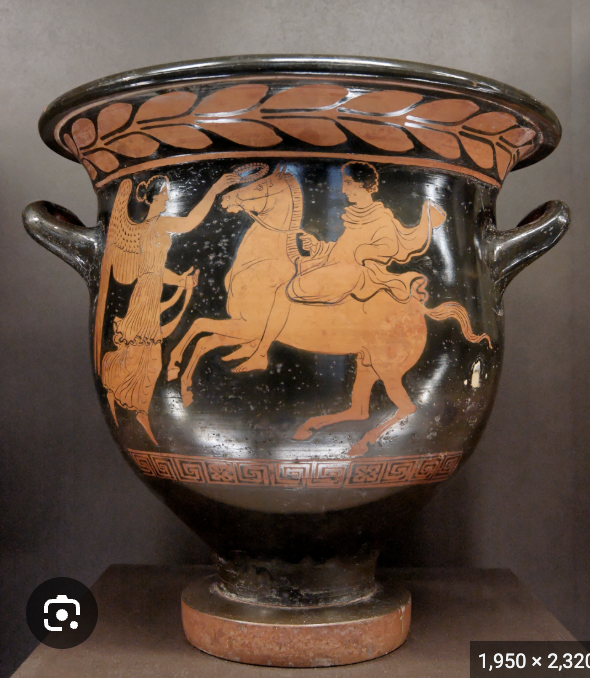
a large, wide mouth, two-handled vase from ancient Greek pottery and metalwork, primarily used for mixing wine with water
krater
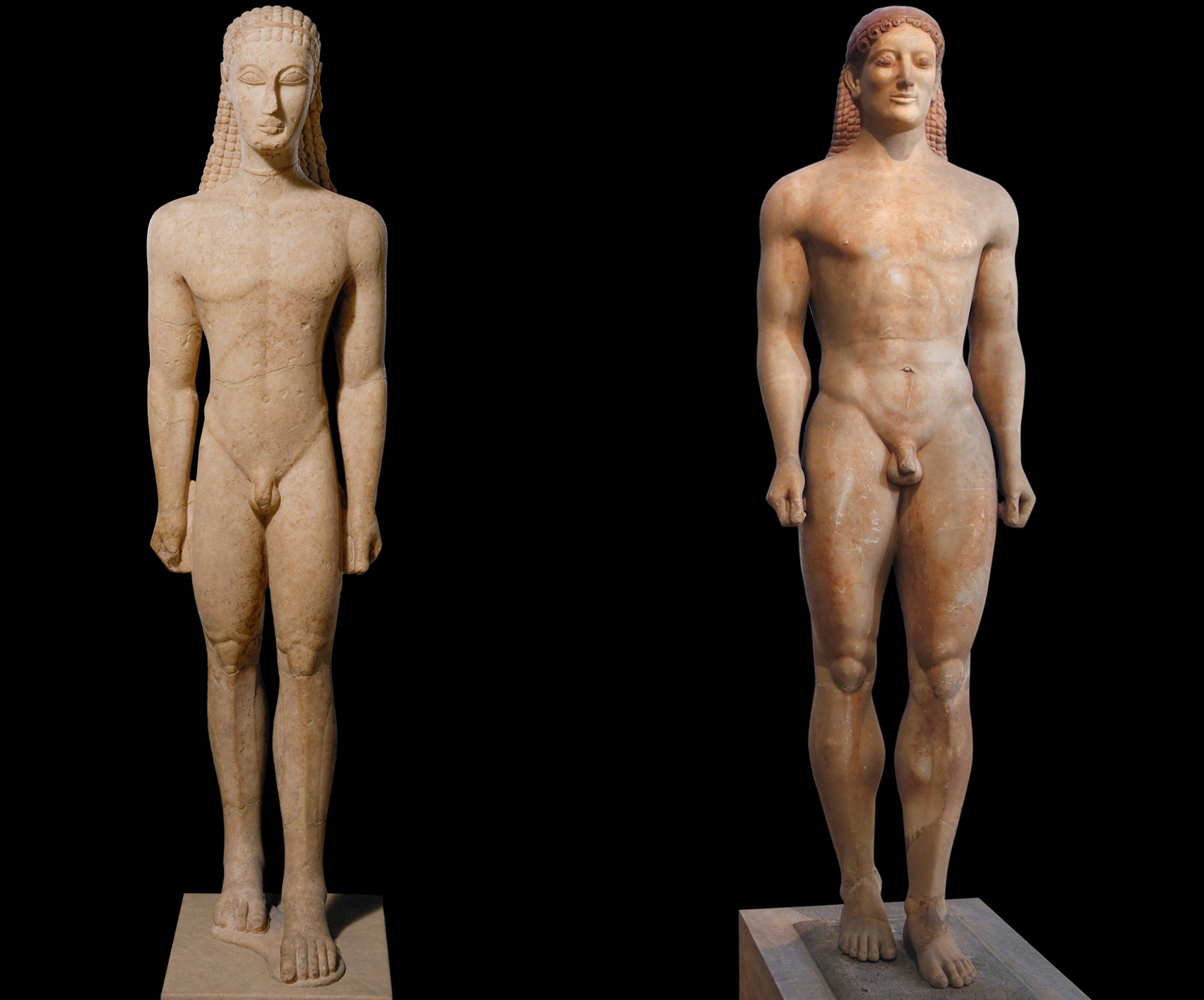
as either grave markers or as votive offerings in sanctuaries
represented an idealized, youthful male form, embodying cultural values like physical beauty, strength, and excellence
kouros/kouroi
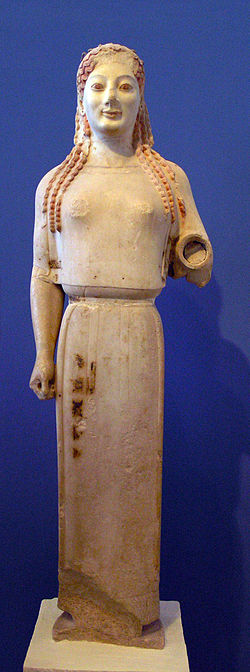
as either grave markers or as votive offerings in sanctuaries
free-standing ancient Greek sculpture of the Archaic period depicting female figures, always of a young age, serving as the female counterpart to the male kouros
kore/korae
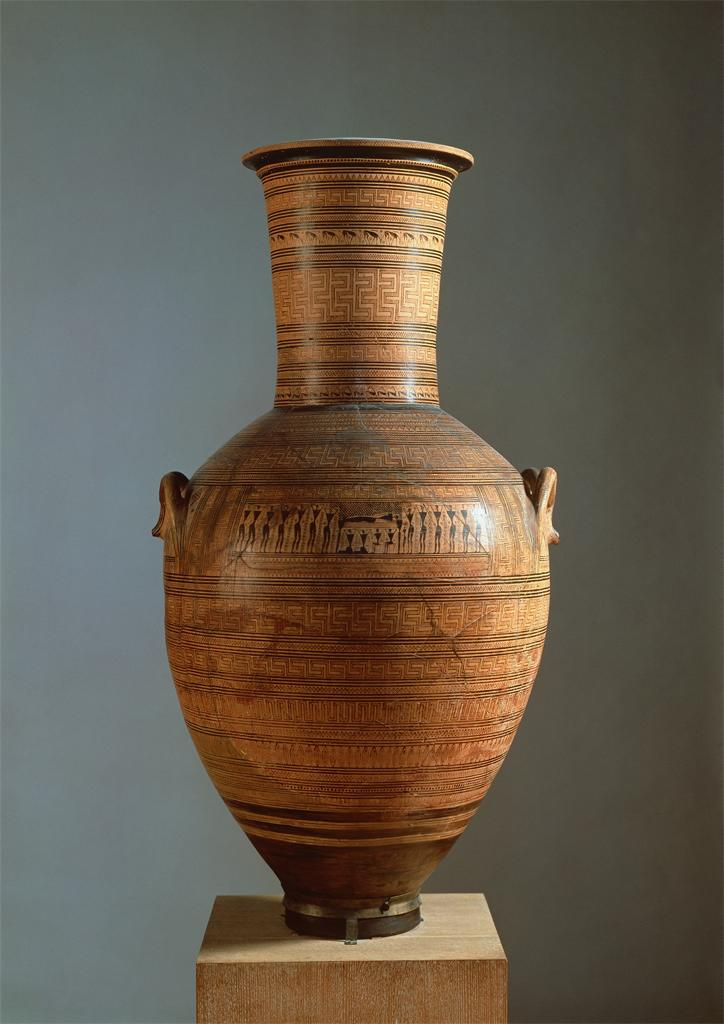
Dipylon amphora, Late Geometric period, 750 BCE, black figure earthenware
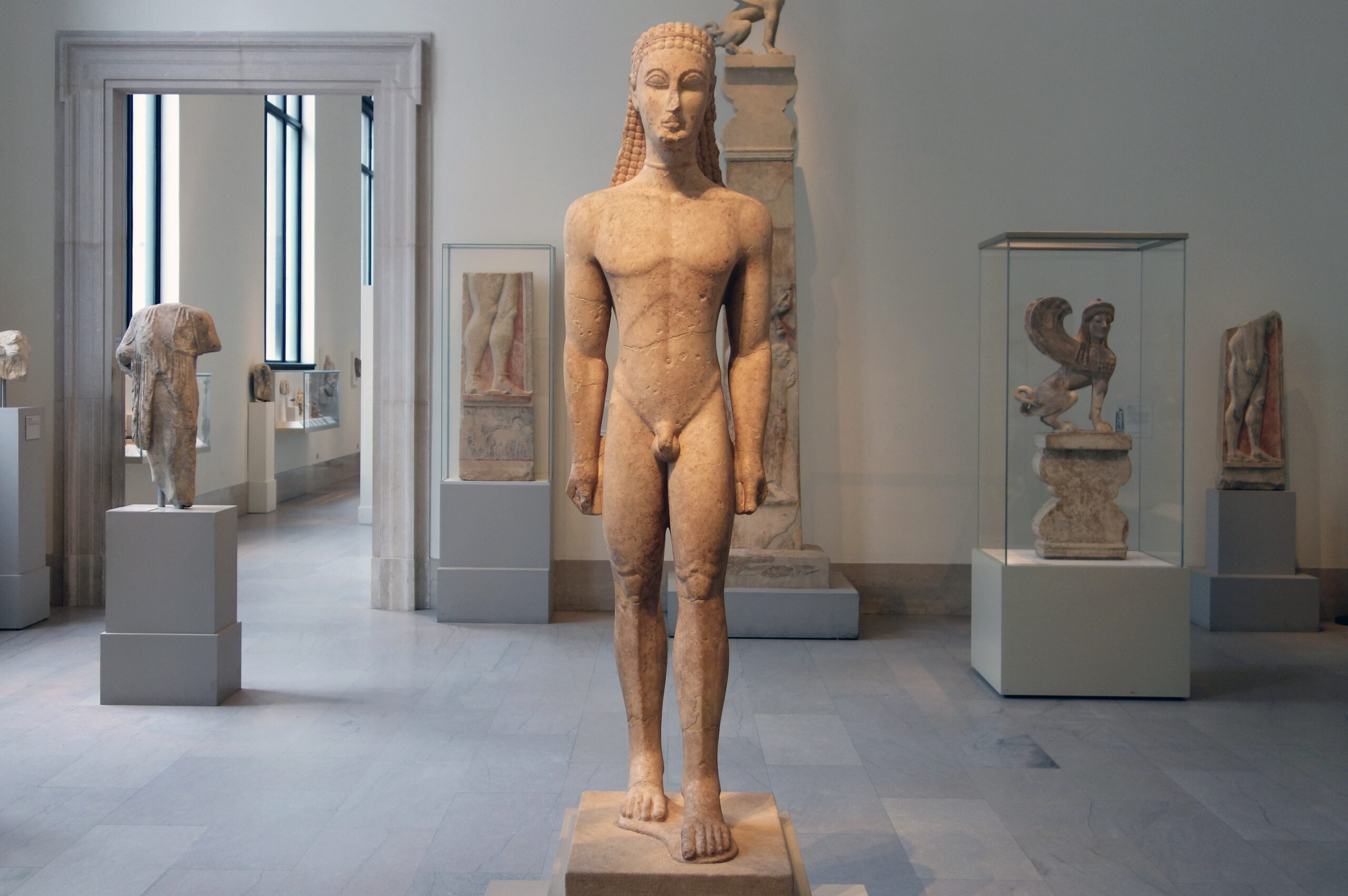
New York kouros, marble, 580 BCE (MMOA)
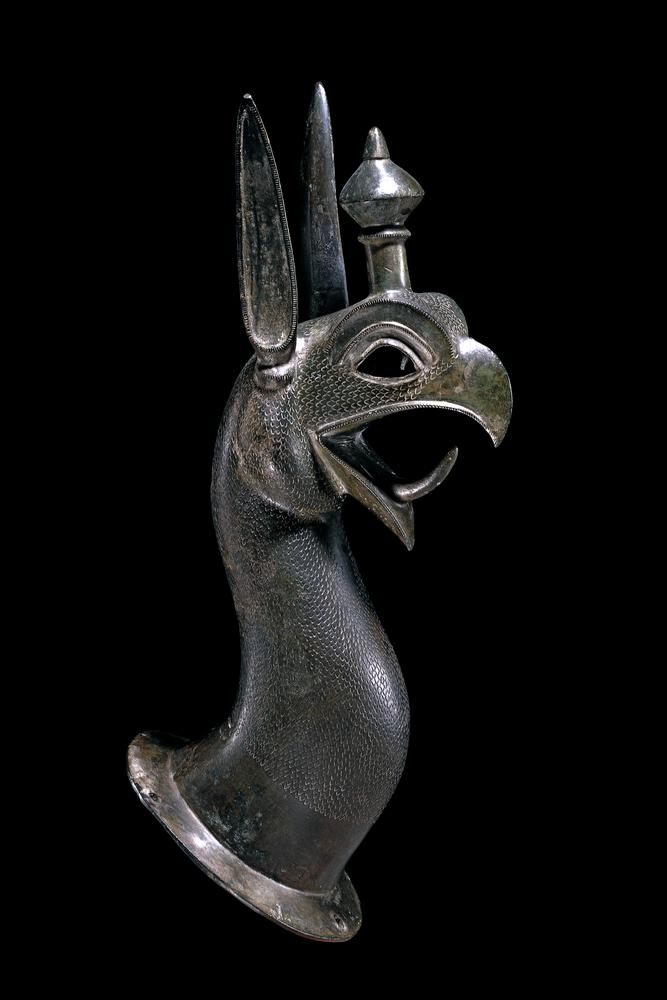
Griffin-headed protome, bronze, 650 BCE (British Museum)
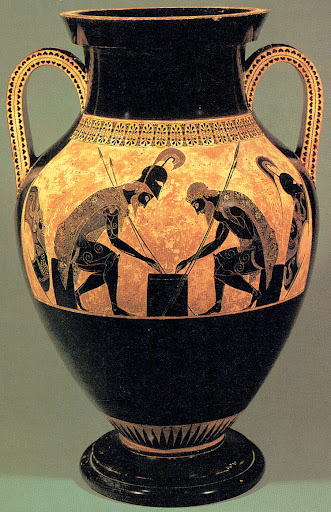
Exekias, Achilles and Ajax amphora, 540 BCE, black figure earthen ware (Vatican)
480-323 BCE
development of Athenian democracy, significant achievements in philosophy, art, and architecture, and major conflicts like the Persian Wars and the Peloponnesian War. The era is often associated with Athens' dominance, sometimes called the "Golden Age of Athens," during which figures like Pericles, Socrates, and the historians Herodotus and Thucydides flourished.
Classical period
480 BCE
Persian forces led by King Xerxes I burned down the city of Athens, as well as the Acropolis, in what is called “the Persian Destruction of Athens.”
Persian sack of Athens
a system of standardized rules for creating idealized human figures in art, based on mathematical ratios and using one body part as a unit of measurement, like the head
canon of proportions
rule or measure
canon
(1:7) outlined ideal proportions for the human form based on mathematical principles. His treatise, a theoretical work, was famously embodied by his statue, the Doryphoros (Spear Bearer), which is a physical manifestation of the "canon" or rule. The Canon emphasized symmetria—a harmonious relationship between the parts of the body—and helped establish a standard for beauty and balance that profoundly influenced Western art.
Polykleitos and his canon
(1:8) revolutionized the classical canon of proportions by creating taller, more slender figures with smaller heads, deviating from the more balanced, harmonious style of his predecessor, Polykleitos. He also introduced a new sense of movement and depth by extending the figure's limbs into space, encouraging viewers to see sculptures from multiple angles rather than just from the front. His innovations are exemplified in works like Apoxyomenos (The Scraper)
Lysippos and his canon
the pleasing arrangement of elements like color, shape, and texture to create a sense of unity and balance within a composition
harmony
measurements that are considered harmonious and aesthetically pleasing, often based on classical art and mathematics
Ideal proportions
an artistic pose where a figure stands with most of their weight on one leg, causing the hips and shoulders to be a natural-seeming twist in opposite directions
Contrapposto
a three-dimensional art form where figures project from a flat, two-dimensional background
relief sculpture
a freestanding, three-dimensional artwork that is not attached to a background, allowing it to be viewed from all sides
sculpture in the round
expanded democracy, boosting its cultural and intellectual life, and solidifying its power as an empire
implemented reforms to make Athenian democracy more inclusive, funded the construction of iconic buildings like the Parthenon
supported artists and thinkers, creating an environment for the Athenian Golden Age
this era left a lasting legacy on Western civilization, though his policies also contributed to the costly Peloponnesian War
Perikles
establishing the classical idealist style, creating iconic sculptures like the Athena Parthenos and the Zeus at Olympia, and setting a standard for artistic excellence in Greece and Rome
his work combined realism with idealized beauty, setting a benchmark for depicting gods and heroes that would be emulated for centuries.
Phedias
secondary architect of the Parthenon and the Temple of Athena Nike, establishing principles of proportion and optical refinement that shaped later Greek, Roman, and Neoclassical design.
Kallikrates
primary architect of the parthenon in Athens, became the ultimate model of the classical Doric style profoundly influencing classical architecture through his mastery of proportional systems, optical refinements, and his sophisticated integration of different architectural orders
Iktinos
Columns: have a heavy shaft with fluting or a smooth surface, no base, and a simple capital consisting of a rounded, saucer-like echinus topped by a square abacus. They represent the most basic and oldest of the Greek architectural orders, often symbolizing strength, masculinity, and simplicity
Entablature: Frieze: The middle section of the entablature, characterized by alternating triglyphs and metopes.
Cornice: The top part of the entablature, which projects outward. It features mutules, which are flat blocks with a sloped underside, projecting over the frieze
Doric
Columns: are distinguished by their slender, fluted shafts and scrolled capitals called volutes and a distinct base.
Entablature: The entablature, the horizontal structure supported by the columns, is also a defining element and can be more decorative than in the Doric order. It consists of the architrave, frieze, and cornice.
Ionic
Columns: highly ornate, bell-shaped capital adorned with two rows of acanthus leaves and scrolls. Other features include a slender, fluted shaft (grooved surface) and a base similar to the Ionic column
Entablature has rich decoration: The entablature, the horizontal section above the columns, is often highly ornamented and sculptural reliefs: The frieze is frequently decorated with continuous sculptural reliefs.
Corinthian
a major religious and civic event in ancient Athens, which honored the goddess Athena. The procession featured a large-scale parade that started at the Dipylon Gate, marched through the Agora along the Panathenaic Way, and ended at the Acropolis. Participants included priests, magistrates, soldiers, athletes, and citizens, and it concluded with a grand sacrifice and the presentation of a new robe (peplos) to Athena's statue
Panathenian process
a fortified hilltop settlement in an ancient Greek city
acropolis
a building for religious worship, especially in religions
temple
small, temple-like structures that were built as ancillary rooms to temples, to house donations made by private citizens to public sanctuaries.
treasury
the body of a temple (as distinct from the portico) in which the image of the deity is housed
cella
the artistic and conceptual plan for a sculpture or group of sculptures, encompassing the materials, techniques, and ideas used to create the work
sculptural program
the triangular upper part of the front of a building in classical style, typically surmounting a portico of columns.
pediment
the use of subtle architectural adjustments to counteract visual distortions and create the illusion of perfection for the human eye
optical refinements
a continuous base supporting a row of columns in classical Greek architecture
stylobate
a slight convex curve in the shaft of a column, introduced to correct the visual illusion of concavity produced by a straight shaft.
entasis
projecting carved bands with three vertical bands, and recessed, often blank sections.
triglyphs & metopes
decorative horizontal band on a building, often featuring sculpture or painting, located between the cornice and the architrave
frieze
a monumental marble relief sculpture depicting the Panathenaic Procession, a grand Athenian festival for the goddess Athena. The frieze shows a ceremonial procession of citizens and gods, with the main event being the presentation of a new robe, the peplos, to Athena's statue. The Parthenon frieze is the low-relief Pentelic marble sculpture created to adorn the upper part of the Parthenon. It was sculpted between c. 443 and 437 BC, most likely under the direction of Phidias.
Procession of Panathenaic Festival/The Commemoration of the Birthday of the Goddess Athena (frieze)
draped female figures used as architectural supports, acting as columns to hold up the entablature of a building; they are often characterized by their statuesque form, with their drapery sometimes resembling the fluting of a column, and a posture with one weight-bearing leg and one free leg that creates a subtle sway.
Caryatids
a quality or feature regarded as a characteristic or inherent part of someone or something
(Athena’s shield or Zeus’s thunderbolt or Poseidon’s trident)
Attributes
“Philosophers even referred to works of art to illustrate their theories. Moreover, beauty was more than an idle conceit for Classical Athenians; it also had a moral dimension. Pose and expression reflected character and feeling, which revealed the inner person and, with it, arete (excellence or virtue). Thus contemplation of harmonious proportions could be equated with the contemplation of virtue. (See Primary Source, page 133.)”
Aristotle (384 322) BCE
The Politics, from Book VIII
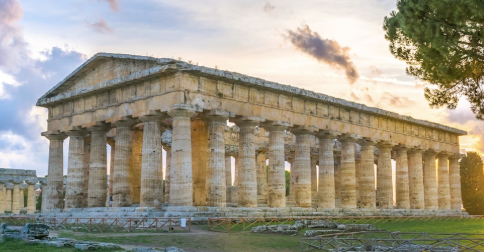
Temple of Hera II at Paesum, Doric temple, marble, 500 BCE
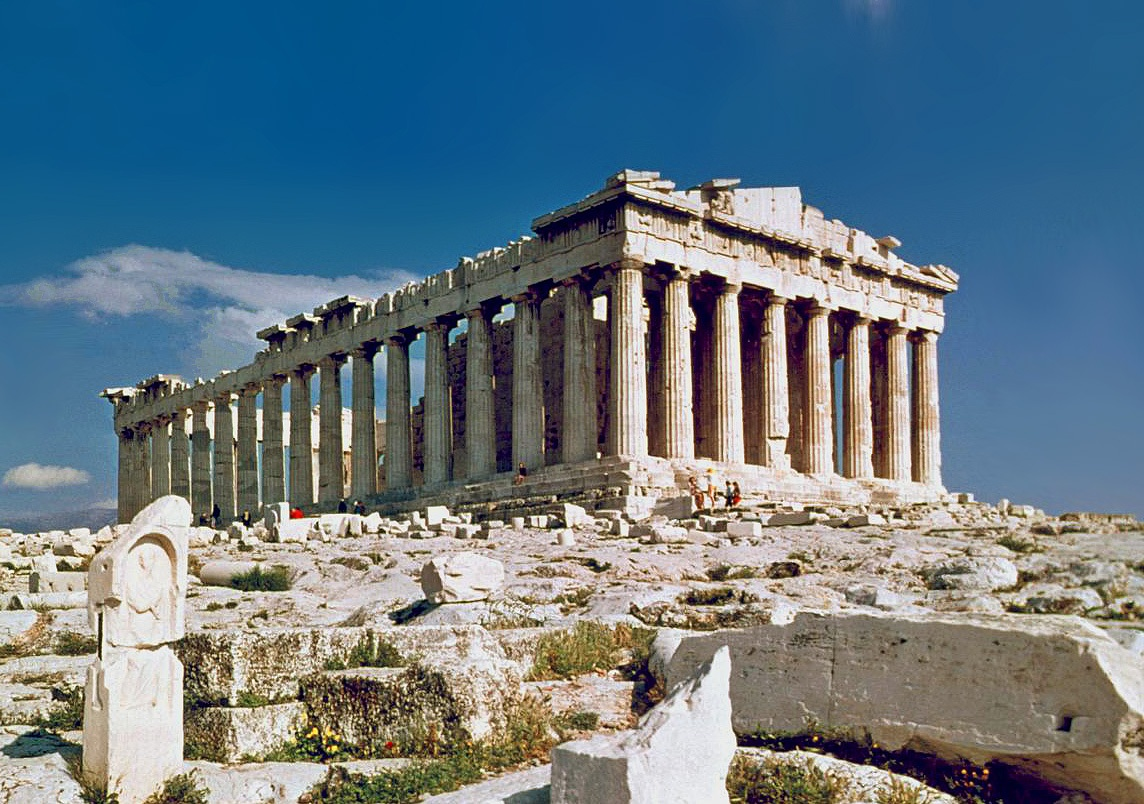
The Parthenon, Doric temple with Ionic features, 447-432 BCE
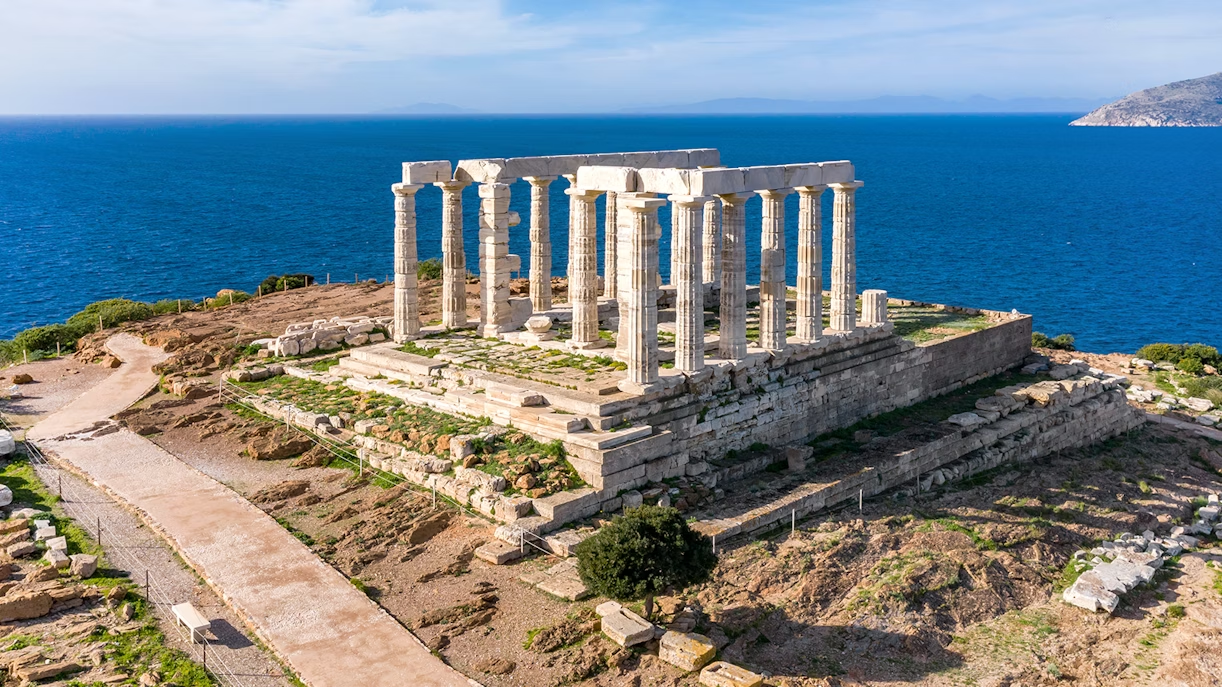
Temple of Poseidon, Cape Sounion, 440 BCE
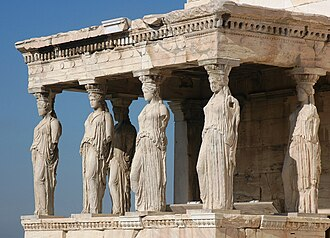
The Erechtheion, dedicated to Zeus and Athena, 421-405 BCE
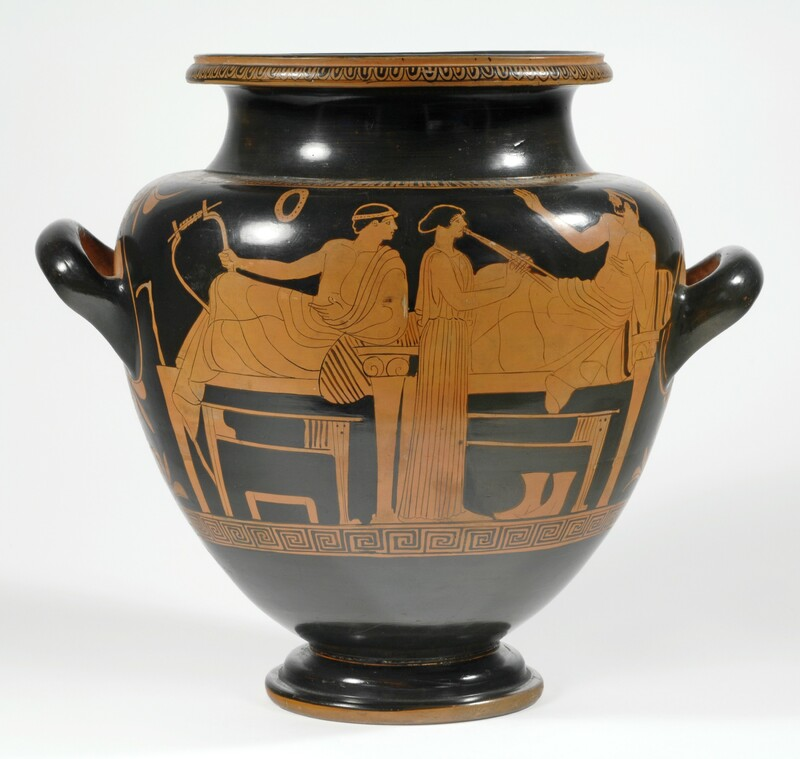
Kensington Painter, Symposium Stamnos, red figure earthenware, 460-450 BC (Kemper!)
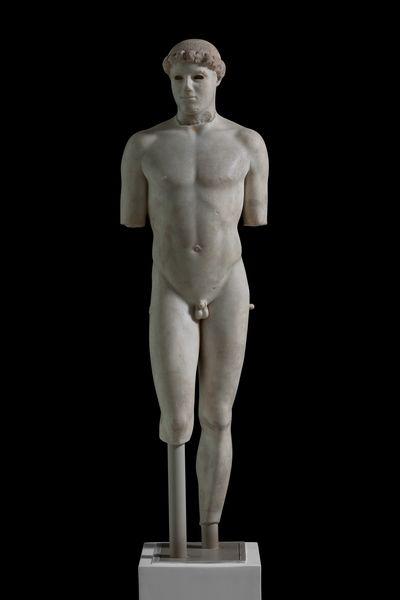
Kritios Boy, marble, 480 BCE
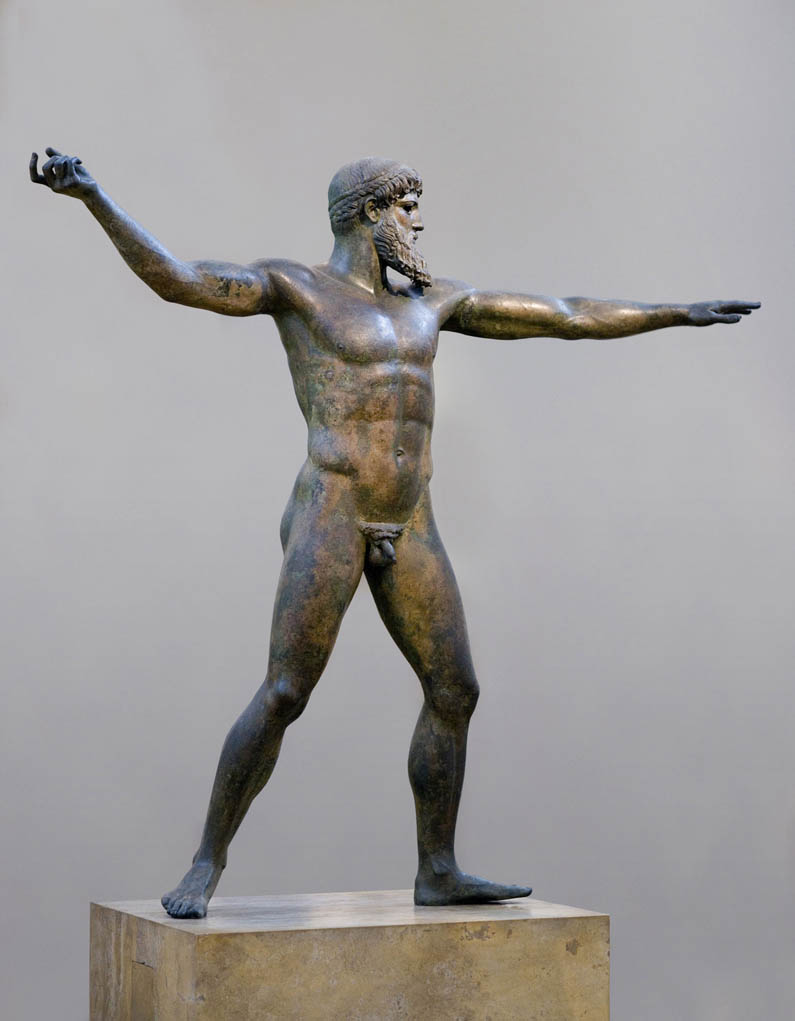
Zeus, bronze, 450 BCE
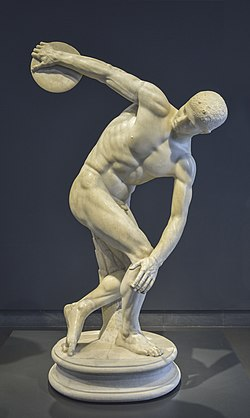
Diskobolos (Disk Thrower), Roman copy after an original of 450 BCE by Myron, marble
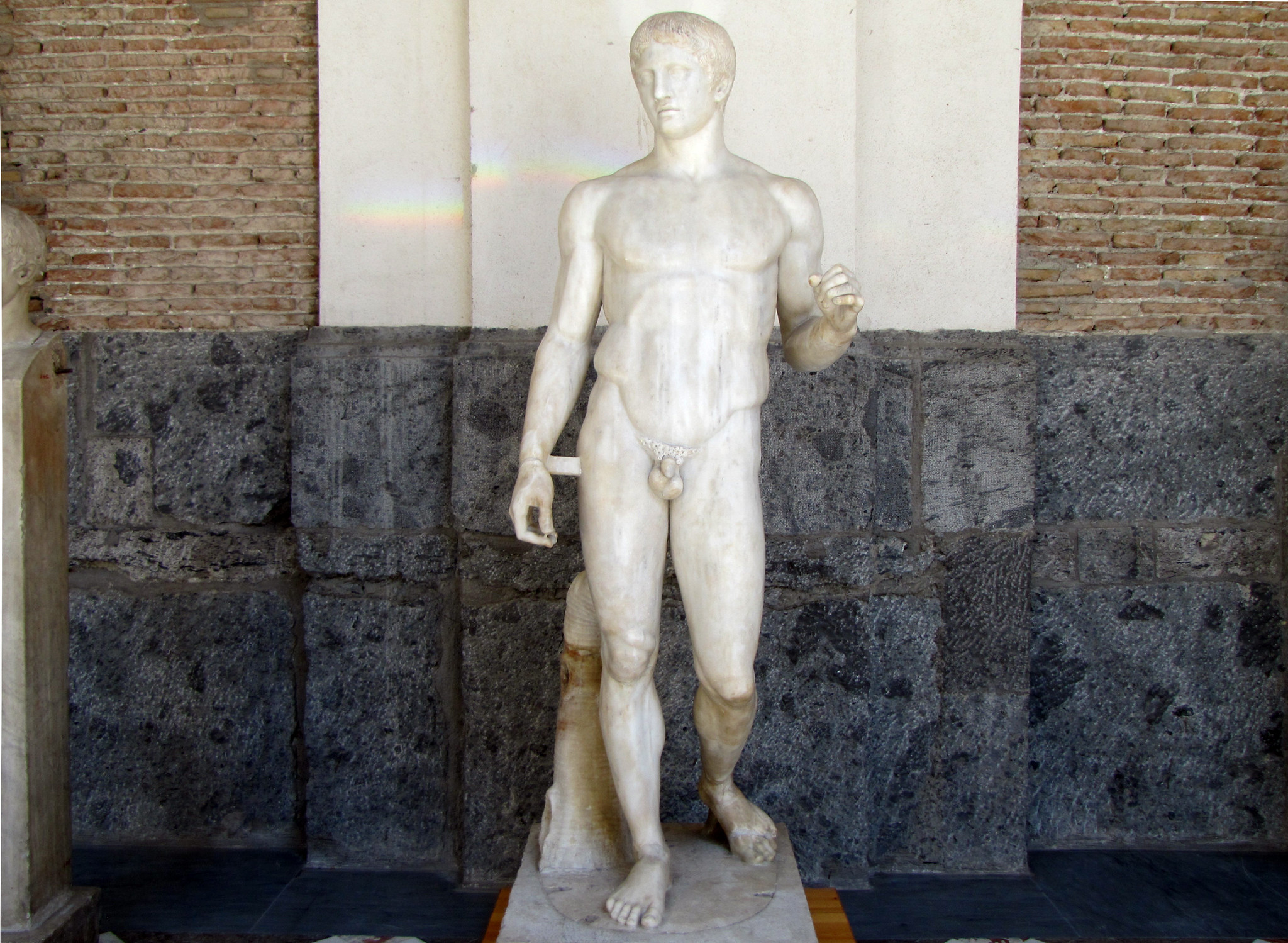
Doryphoros (Spear Bearer), Roman copy after an original of 450 BCE by Polykleitos, marble
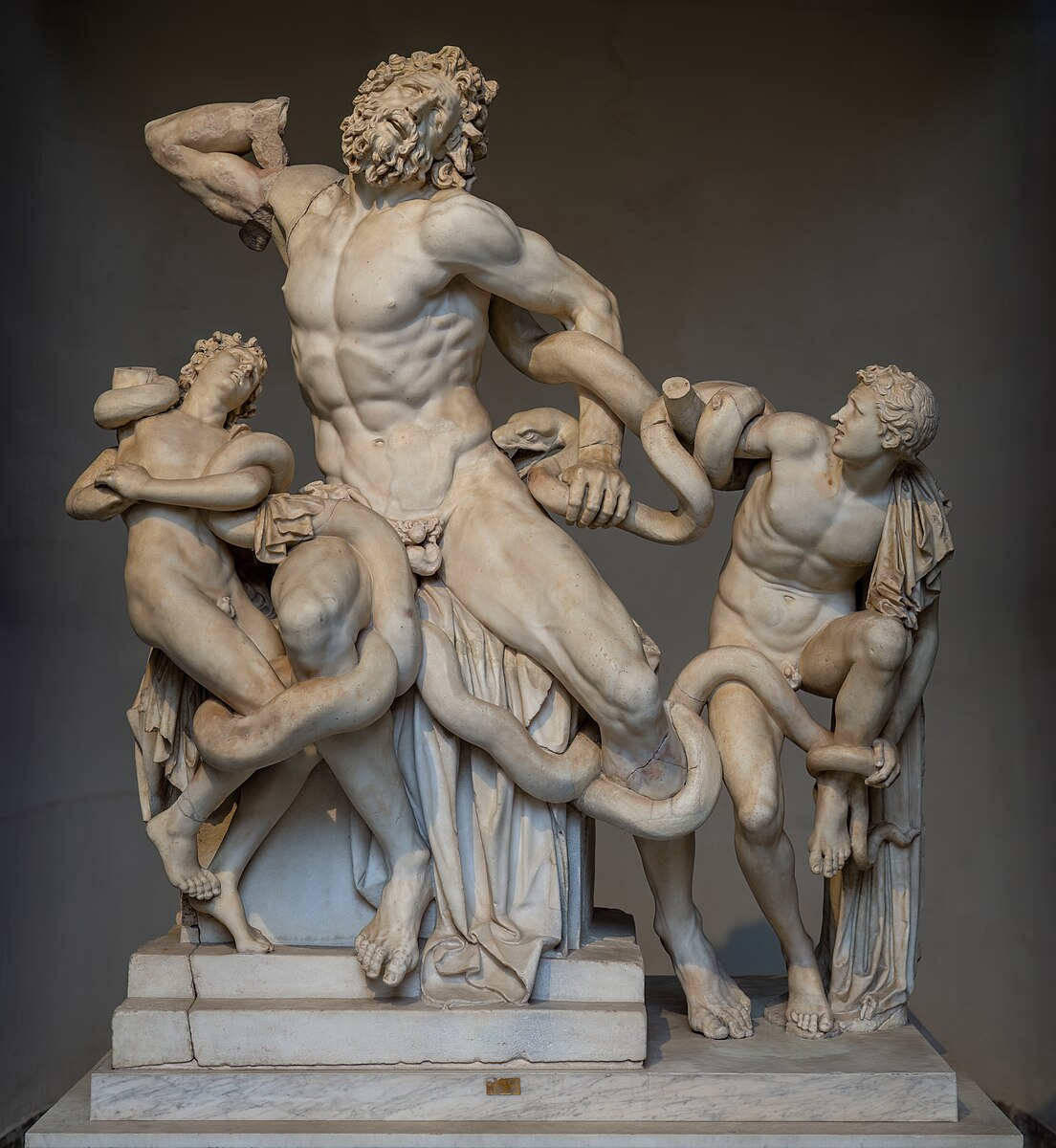
Laocoön, marble, 1st c. CE. Musei Vaticani
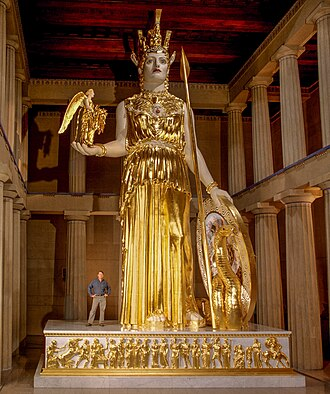
Athena Parthenos cult statue, chryselephantine 5th century BCE. Does not survive
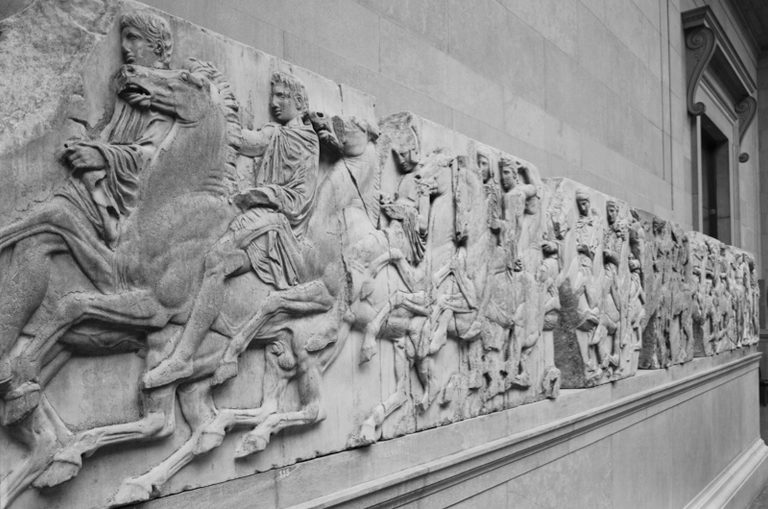
Parthenon Marbles, Elgin Marbles or Parthenon Sculptures: Pediment sculptures and frieze sculptures, marble, 5th century BCE. (British Museum)
The Age of Alexander and the Hellenistic Period
This era is known for a shift from earlier, more serene and idealized styles to more naturalistic, emotional, and humanistic forms in sculpture, painting, and architecture. Notable examples include the Aphrodite of Knidos sculpture and a new realism in painting
Late Classical
353 - 323 BCE
known for being a brilliant military strategist who, in less than a decade, built one of the largest ancient empires in history, stretching from Greece to Egypt and into parts of India. His conquests also led to the widespread dissemination of Greek culture, known as Hellenistic culture, across this vast territory, and he founded numerous cities, including the famous Alexandria in Egypt.
Alexander the Great
a legendary battle in Greek mythology where the Olympian gods fought and defeated the Giants; the conflict was crucial to the Olympians' rise to power, and the gods were ultimately victorious with the help of the mortal hero Heracles
Gigantomachy
the quality of being exaggerated and excessively dramatic
Theatricality
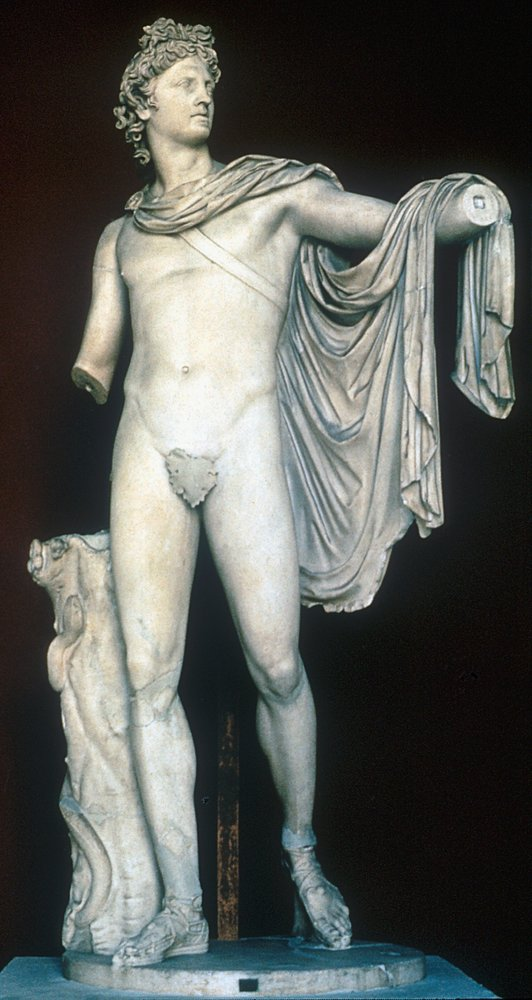
Apollo Belvedere, Roman copy of a Greek original, 4th century BCE, marble
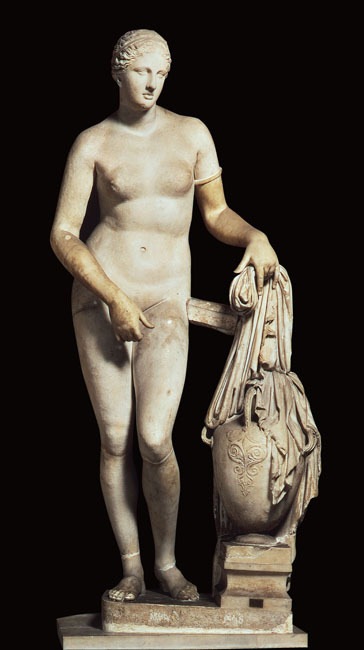
Aphrodite of Knidos, Roman copy of an original, 340 BCE by Praxiteles, marble
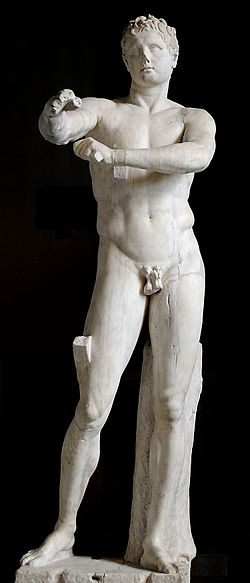
Apoxyomenos (a youth scraping oil from his skin with a strigil), Roman copy after an original 330 BCE by Lysippos, marble (Vaticani)
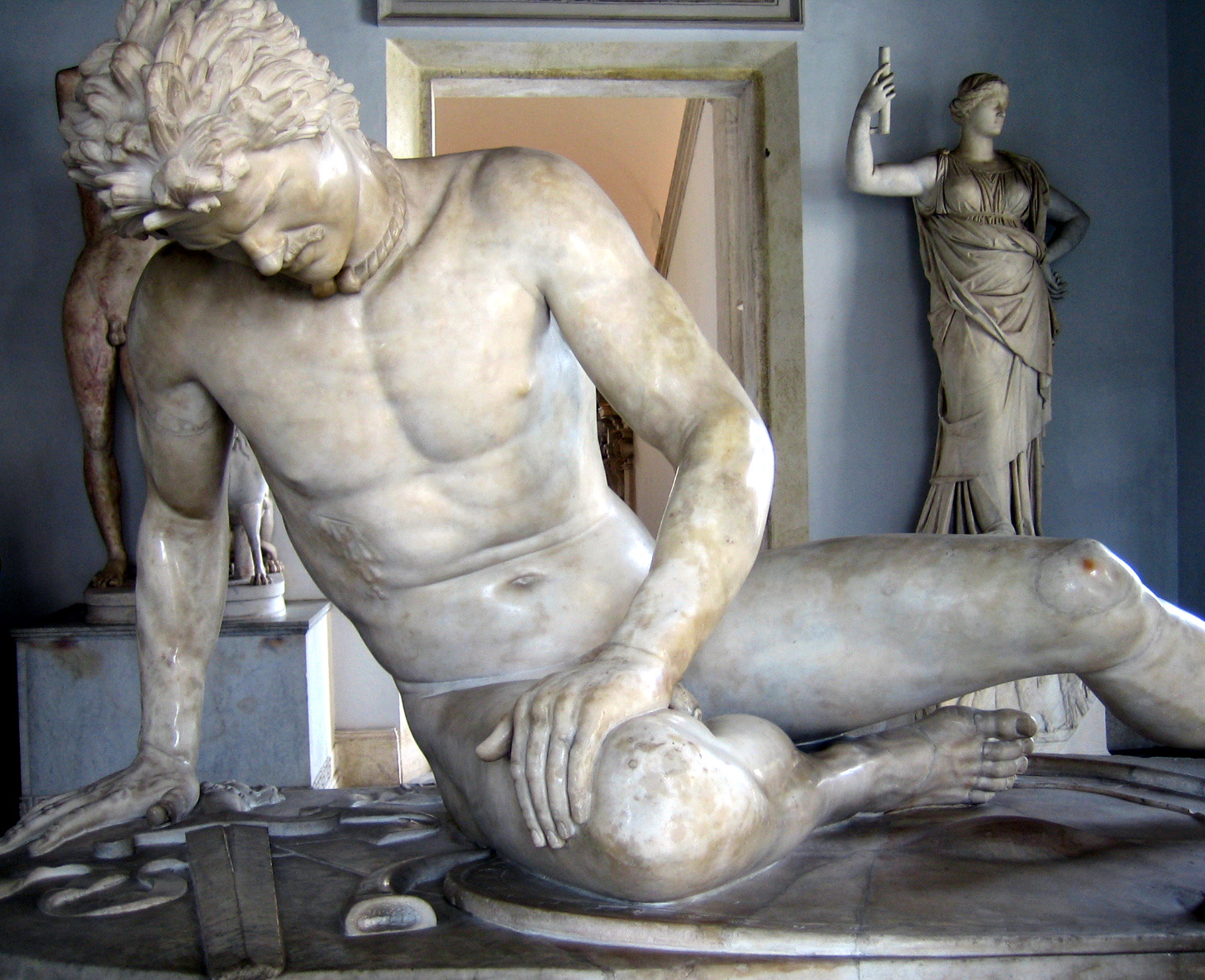
The Dying Gaul, Roman copy of a Greek original of 225 BCE (from Pergamon)
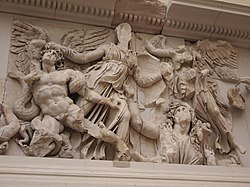
Great Frieze of the Great Altar of Zeus at Pergamon Altar, 2nd century BCE (Pergamon Museum Berlin)
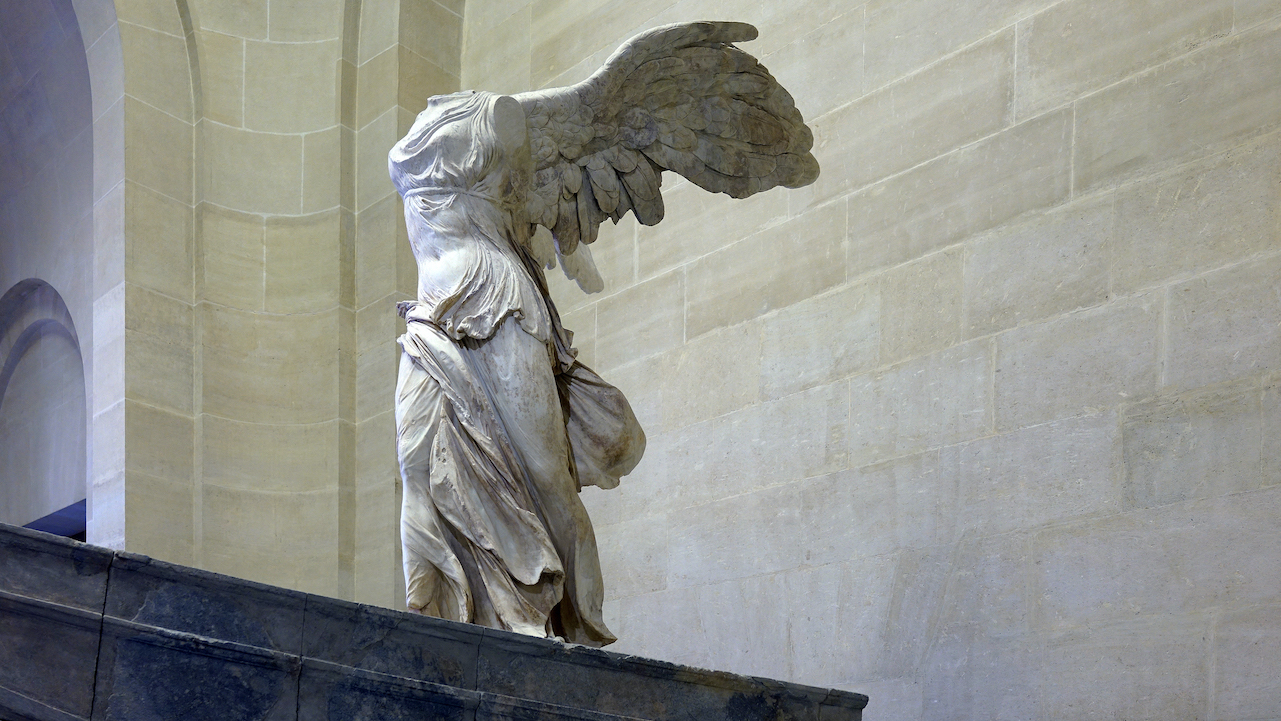
Winged Victory of Samothrace, marble, 190 BCE (Lourve)
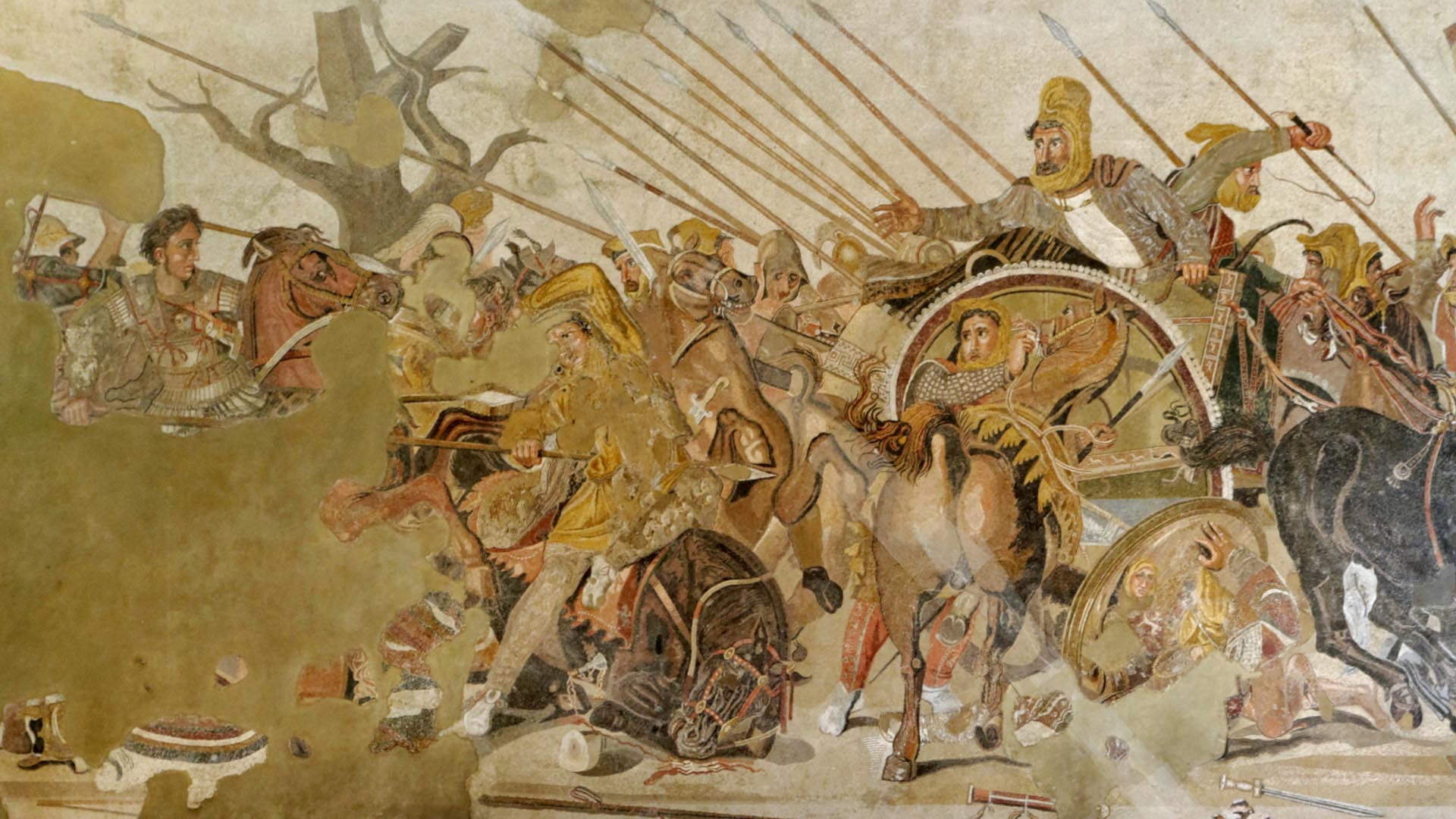
Battle of Alexander and the Persians, mosaic copy from Pompeii of a Hellenistic painting, 315 BCE, made in 100 BCE
1000 BCE - 270 BCE, in Italy
Etruscan culture was a complex and influential civilization that flourished in ancient Italy, known for its advanced metalworking, distinctive art, and unique social structures that granted women more freedoms than in many other ancient societies. Their culture is best understood through their elaborate tombs, which reveal details about their rich banquets, religious beliefs, and emphasis on the afterlife, as well as their architectural innovations like the arch and vault. The Etruscans significantly influenced Roman civilization, contributing to their urban planning, religious practices, and alphabet.
Etruscan culture
Greek speaking areas of modern day southern Italy
Magna Graecia
any work of art created for or placed in a repository for the dead, such as tombs, graves, or memorials
funerary art
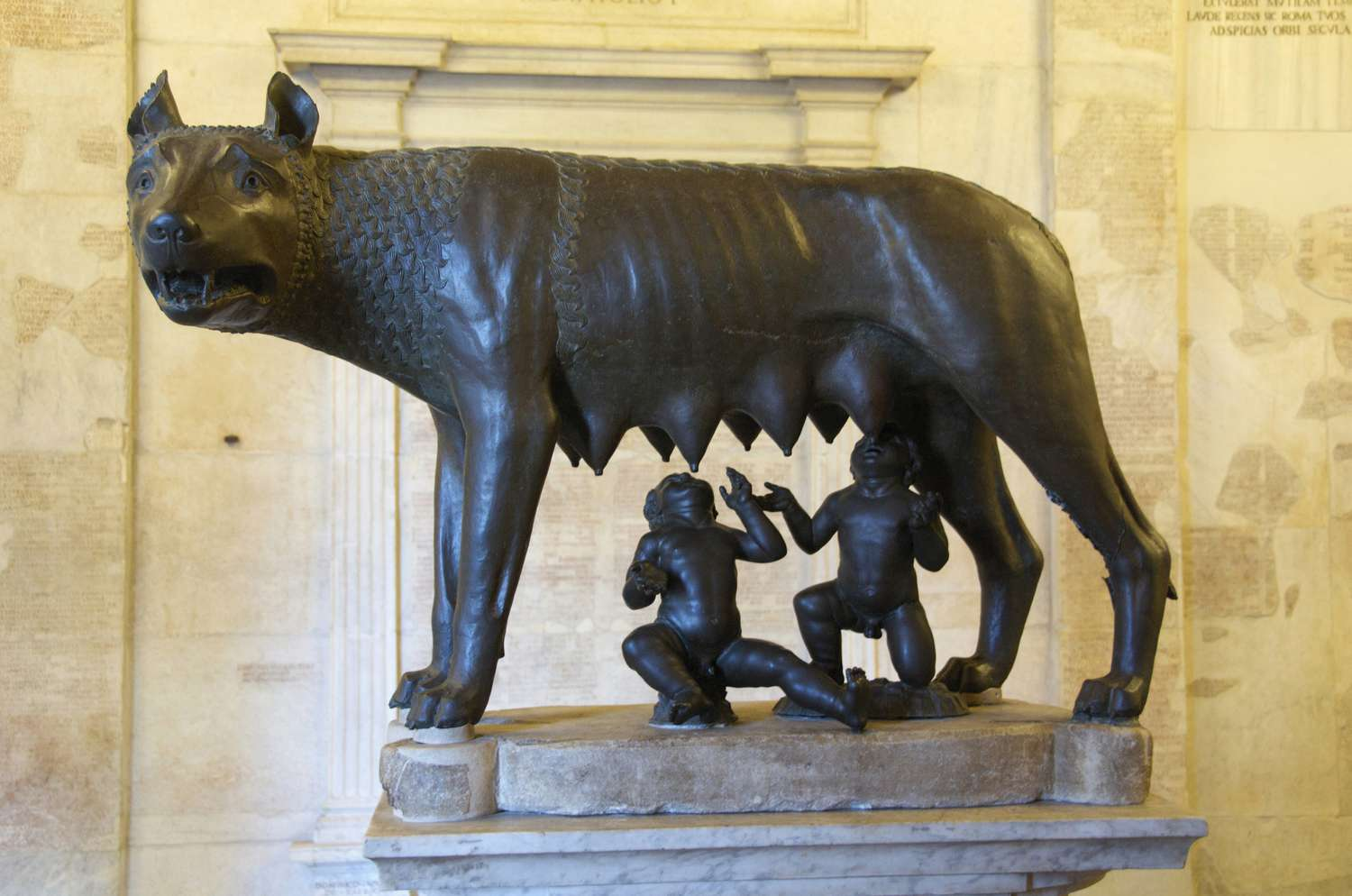
She-wolf with Romulus and Remus, bronze, 5th century BCE (twins are a 15th century addition), Etruscan
Rome, your ruins demonstrate how great you were
ROMA QUANTA FUIT IPSA RUNIA DOCET
spoils is an English word for loot, damage, or the rewards of victory, while spolia is the Latin term for repurposed architectural or art elements, often the "spoils" of a past construction that are reused in a new one
spoils/spoila
the legacy of physical artifacts and intangible attributes inherited from past generations, representing a society's history, identity, and creativity
cultural heritage
the return of someone to their own country.
repatriation
the theft of property during a time of public crisis, such as a natural disaster or riot, but can also refer to plundering during wartime or the illegal removal of archaeological artifacts
looting
The round arch is a foundational architectural element in art history, characterized by its semicircular shape and originally developed by ancient Mesopotamians and Romans, who refined its use in Romanesque and Renaissance architecture. It is a structural form that, when complete, redirects weight downwards and outwards through its wedge-shaped stones to a stable base. The round arch's historical significance lies in its role in creating large, open spaces.
round arch
the simplest form of a vault: effectively a series of arches placed side by side
barrel arch
an architectural feature created by the intersection of two barrel vaults at a right angle.
groin vault
the copying and adaptation of Greek sculptural styles by other cultures, notably the ancient Romans and Renaissance artists, who admired and sought to replicate the realism and beauty of Greek works
emulation of Greek sculpture
a highly realistic artistic style of Roman art. It was principally used in portraits of politicians, whose facial imperfections were exaggerated to highlight their maturity, experience, and gravitas.
verism/veristic portraiture
the amalgamation or attempted amalgamation of different religions, cultures, or schools of thought
syncretism
the remains of a building, city, etc., that has been destroyed or that is in disrepair or a state of decay
ruins
a small block of stone, tile, glass, or other material used in the construction of a mosaic
tesserae
lasting fascination with the culture, style, and mystique of ancient Egypt
Egyptomania
The last active Hellenistic pharaoh. Her relationships with the Roman leaders Julius Caesar and Mark Antony, which were crucial in influencing Roman politics and the fate of Egypt.
Cleopatra
a strong, hard, building material made by mixing cement, aggregate (like sand and gravel), and water, which then hardens to form a solid mass
concrete
the deliberate spread of information, ideas, or rumors to influence the opinions, emotions, or behaviors of a target audience, often by presenting a biased or incomplete picture.
propaganda
the act of making someone a god or treating them as a deity
deification
the elevation of a person to the status of a god or a model of perfection
apotheosis
refers to the ancient Roman public spaces that were the centers of civic and religious life, serving as public plazas surrounded by monumental architecture and art
forum/fora
a hemispherical structure in architecture
dome
a round opening in a ceiling or dome
oculus
When does the Roman Republic end?
Roman Republic ends when Julius Caesar, dictator, dies, assassinated on the Ides of March, 44 BCE (led by Brutus, Cassius; heirs to Julius Caesar Octavian, Mark Antony)
The new Roman Empire emperor was? and was followed up by
Octavian (Augustus); Vespasian; Titus; Trajan; Hadrian (Graeculus)
the first Roman emperor to convert to Christianity
Constantine
a Roman general and statesman who was a close friend, son-in-law and lieutenant to the Roman emperor Augustus
important military victories, notably the Battle of Actium against the forces of Mark Antony and Cleopatra
responsible for the construction of some of the most notable buildings of his era, including the original Pantheon.
Agrippa
What happened at the Battle of Actium 31 BCE?
Octavian's forces decisively defeated the combined naval forces of Mark Antony and Cleopatra at the Battle of Actium. The battle marked the end of the Roman Republic's civil wars, leading to Octavian's consolidation of power and paving the way for him to become Rome's first emperor, Augustus. Antony and Cleopatra fled the battle and, after their land forces surrendered, they committed suicide the following year.
The siege of Jerusalem in 70 CE was the decisive event of the First Jewish Revolt against the Roman Empire (66–73 CE). Roman forces led by Titus besieged the Jewish capital, the revolt's main stronghold. After months of fighting, they breached the defenses, destroyed the Second Temple, and razed the city, killing, enslaving, or displacing much of its population. The city's fall marked the effective end of the revolt and had far-reaching political, religious, and cultural consequences.
What happened at the Roman victory of Judaea, 71 BCE?
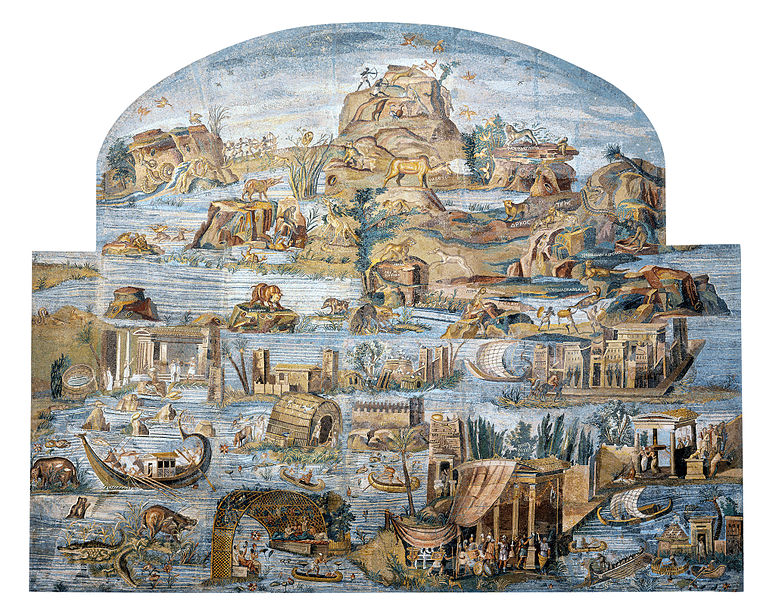
Nile Mosiac of Palestrina, 1st century BCE
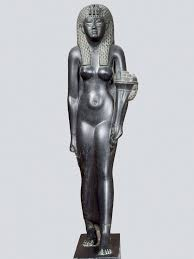
Portrait of Queen Cleopatra, basalt, 1st century BCE